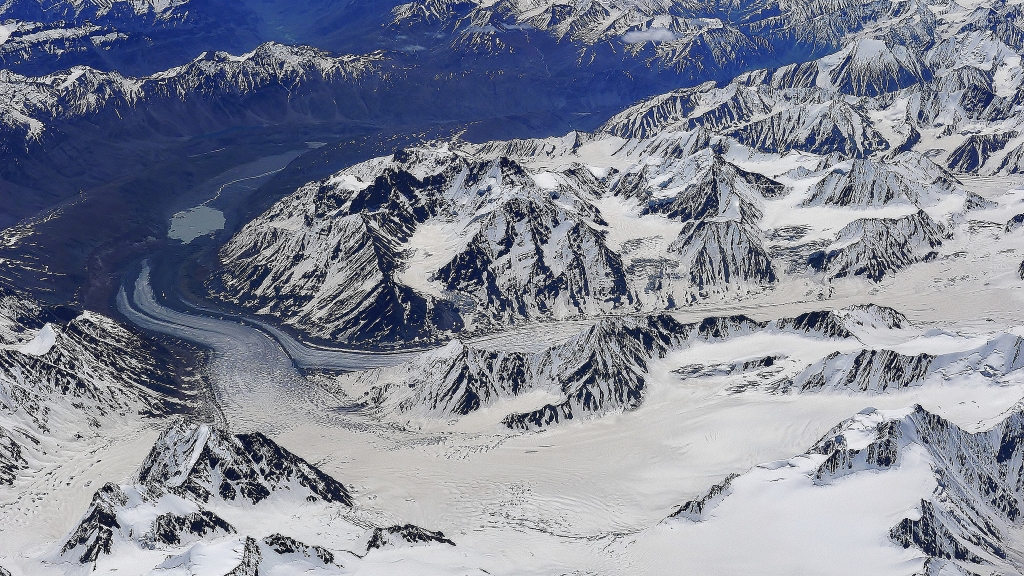How much global warming can the world’s glaciers take?
The huge glaciers in the Himalayan mountain system are often called the “water towers of Asia”. These immense reservoirs feed the rivers that feed the world’s most populated continent.

But now there is a growing concern that melting of both glaciers and seasonal snow, due to climate change, will have severe effects on the food security of millions of people. But while the media is giving this subject a lot of attention, within the scientific community this prognosis remains controversial. There is not even a consensus on how much water glaciers and snow actually contribute to river flow.
Now, two new research reports from the International Water Management Institute (IWMI) aim to address this knowledge gap. The reports assess water storage properties and the hydrological role of glacier systems and seasonal snow coverage in six major Asian basins: namely Indus, Ganges, Brahmaputra, Mekong, Amu Darya and Syr Darya. The analysis is based on the data on the baseline (1961-1990) and current (2000-2010) states and the likely development of glaciers and snow under a changing climate.
IWMI’s Anna Deinhard spoke to the authors of the study, Oxana Savoskul and Vladimir Smakhtin:
Anna Deinhard: What are the impacts of climate change on glacier systems and snow cover in the river basins you looked at?
Oxana Savoskul: We found that at the basin scale, climate change over the past 50 years caused a pronounced decrease of both the areas covered permanently by glaciers, and seasonally – by snow. The water storage properties of glaciers and snow decreased too. There was a lot of variation in the figures depending on which basins we were looking at, but in some cases the areas covered by snow and ice had declined by as much as a third. By the end of the 21st century under projected air temperature increases of 4-5 ˚C in the basins we studied, only the Syr Darya and the Mekong Basins are likely to become glacier-free. The large and diverse glacier systems in the Indus, Ganges, Brahmaputra and Amu Darya basins will endure that degree of warming, albeit diminished and with less capacity to moderate the flows in the river system. We calculated, for instance, that air temperature increases in the order of 13-15 ˚C will be required to melt down all the glaciers in the Indus basin, 10-12 ˚C – in the Ganges and Brahmaputra basins, and around 6-8˚C in the Amu Darya.
AD: How do you explain that climate change impacts differ so greatly from one glacier system to the other?
OS: The response of glacier system to climate change is determined chiefly by its structural diversity and the higher the diversity, the stronger the system’s ability to cope with the climate change impact. Out of the 6 basins that we evaluated, we found that the Indus basin has the largest and most diverse glacier system in terms of the number of glaciers, ice-covered area and ice volume, while the Mekong has the least diverse system. This explains the large differences in their sensitivity to climate change.
AD: What happens to the meltwater? How is it affected by climate change?
OS: From the basin scale perspective, the contribution of glaciers and seasonal snow dominates river flow only in the Amu Darya and Syr Darya. Among the river basins of the Greater Himalaya region, only in the Indus meltwater currently contributes up to 40% of the total runoff, with snowmelt and glacier shares being almost equal. If we look at the Mekong, Brahmaputra and Ganges the contribution of glaciers and snowmelt to the total basin water resources is rather small. In the Ganges and Brahmaputra, the melt water proportion in runoff is just 4-6%, and it is negligible in the Mekong basin.
Vladimir Smakthin: Our findings confirm that future changes in glaciers and seasonal snow due to climate change will mainly affect the seasonality of rivers’ flow, but only marginally impact the volume of annual stream flow at basin scale. In addition upstream parts of the basins will be affected more than downstream areas. Seasonality changes are important for crops of course, but they are determined not just by melt water, but also, by changing pattern of the monsoon – which dominates 4 out of the 6 basins we studied.
AD: What are the key messages emerging from your study?
VS: First of all, spatial parameters of glacier systems and snow coverage, such as water storage capacity and areal extent have been without doubt affected by climate change and in general have reduced over the past 50 years. However we see that these changes have very high spatial variability.
Second, glacier systems in the Indus, Ganges, Brahmaputra and Amu Darya basins will survive the warming projected by the end of the century.
Third, in most of the basins, melt water contribution is either equally shared by glaciers and snow, or dominated by snowmelt. This is something that is generally ignored in other studies in this field, so it needs to be re-emphasized: it is not just glaciers that matter – snow is a very significant player too at present and in the future.
OS: We may also definitely state that meltwater contribution to river flow in the study basins has been reducing over the past 50 years and will be on decline in the nearest future. Flow regulation capacity of glaciers and snow will diminish with changing climate too. However, the main impact of these changes on water availability at basin scale will be the change of flow seasonality, the total amount of water will be affected mainly by changes in precipitation regimes.
How will climate change affect the river basins of Asia?Key messages[fancy-ul style=”check-list” variation=”blue”]
[/fancy-ul] |
[hr top=”no”/]
About the interviewees
Oxana S. Savoskul is a Research Associate and Vladimir Smakhtin is Theme Leader – Water Availability and Access at IWMI in Colombo, Sri Lanka.
Supplementary materials on the Water Data Portal.

